Best countries to visit in south america
Planning a trip to South America can be a daunting task, given the incredible diversity across its 12 countries.
The continent spans multiple climate zones, with seasons reversed from the Northern Hemisphere, making it crucial to understand the seasonal variations.
From the Amazon rainforest to Patagonian glaciers, each region has optimal visiting periods that can dramatically impact your travel experience.
This comprehensive guide will help you navigate the varied climate zones and seasonal patterns to plan your perfect South American adventure, ensuring you make the most of your journey.
Understanding South America’s Diverse Climate Zones
South America’s vast territory encompasses a multitude of climate zones, each with its unique characteristics. The continent’s geography is so varied that it includes tropical rainforests, arid deserts, and snow-capped mountains, making it a fascinating destination for travelers.
The Equatorial North
The equatorial north, which includes countries such as Colombia and Ecuador, is characterized by a relatively constant warm temperature throughout the year. This region experiences a tropical climate with high humidity and significant rainfall, particularly during the wet season.
The Andean Highlands
The Andean highlands, spanning across countries like Peru and Bolivia, have a distinct climate due to their high altitude. The temperature varies significantly between day and night, and the region experiences a dry season and a wet season. Travelers to this region should be prepared for potential altitude sickness.
The Southern Cone
The Southern Cone, comprising Argentina, Chile, Uruguay, Paraguay, and southern Brazil, features the most pronounced seasonal variations in South America. This region experiences four distinct seasons, with significant temperature differences between summer (December-February) and winter (June-August). The shoulder seasons often provide the most pleasant weather for visiting many countries in this region.
| Region | Climate Characteristics | Best Time to Visit |
|---|---|---|
| Equatorial North | Warm, tropical, high humidity | Year-round, avoiding wet season |
| Andean Highlands | Variable temperature, dry and wet seasons | Dry season (May-September) |
| Southern Cone | Four distinct seasons, significant temperature variations | Shoulder seasons (spring and fall) |
Understanding these climate zones is essential for planning a trip to South America, ensuring that travelers are prepared for the weather conditions they will encounter in different countries and regions.
When to Visit the Andean Region
The Andean region, encompassing countries like Peru, Bolivia, and Ecuador, offers diverse landscapes and climates, making it a fascinating destination for travelers. This region is home to some of the most spectacular natural wonders and culturally rich destinations in South America.
Peru and Machu Picchu
For visitors to Machu, Picchu, the best time to visit is during the dry season, from May to September. This period offers clear skies and comfortable temperatures, ideal for exploring the Inca citadel.
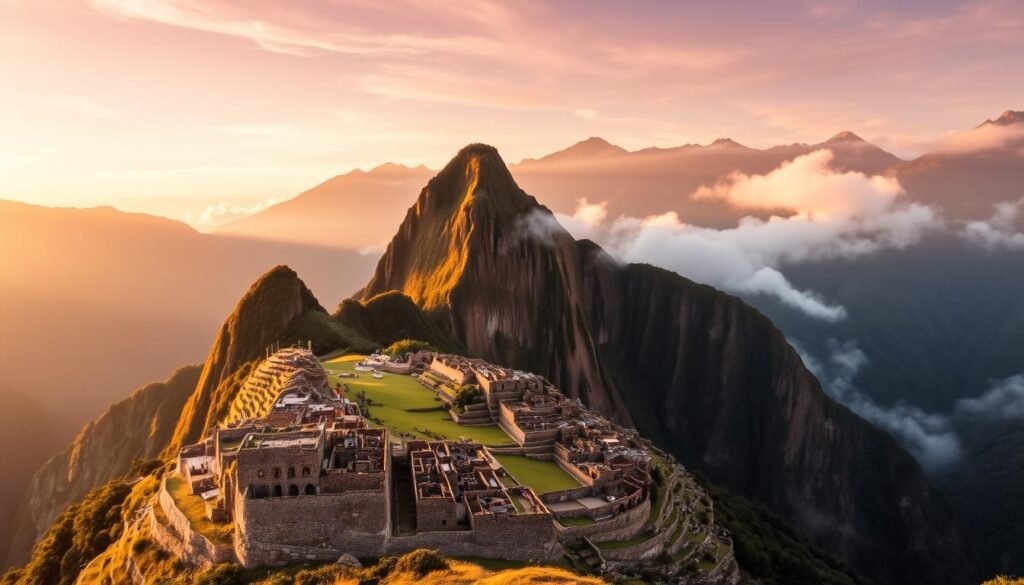
Bolivia’s Altiplano and Salt Flats
Bolivia’s Altiplano and the famous Salar de Uyuni are best visited during the dry season, from May to November. The dry conditions make it an ideal time for visiting the salt flats and experiencing the unique landscapes of the Altiplano.

Ecuador’s Highlands
Ecuador’s highlands, including the capital city of Quito, enjoy relatively consistent temperatures throughout the year. The dry season, from June to September, is particularly pleasant, with clear views of the surrounding mountains. The shoulder months of May and October can also provide good weather with fewer tourists.
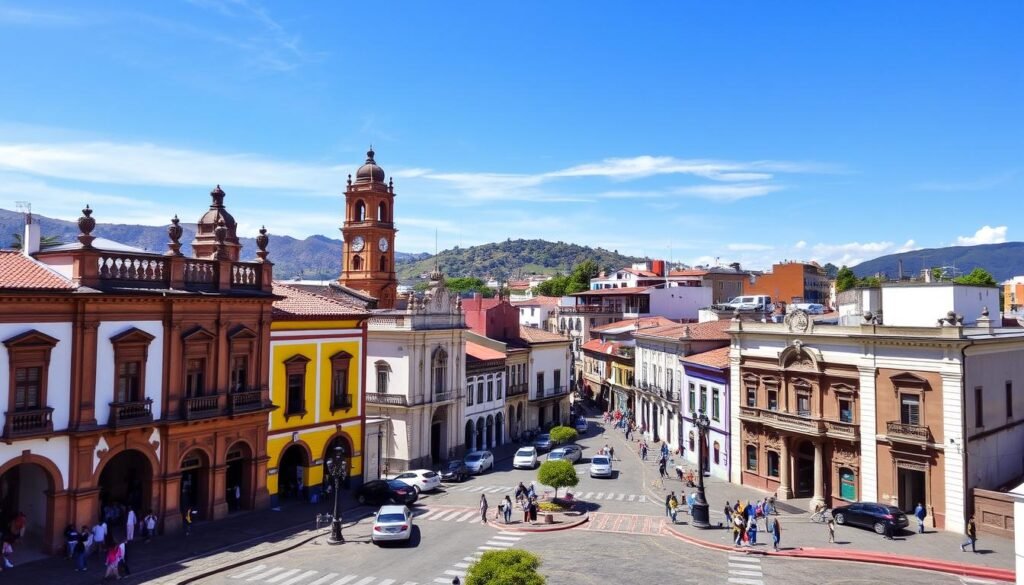
The Andean region’s diverse geography means that the best time to visit can vary significantly from one country to another. Understanding these variations can help travelers plan their trip to make the most of their visit.
Best Seasons for the Amazon Basin
Exploring the Amazon rainforest requires understanding its seasonal variations to make the most of your trip. The Amazon Basin, covering a vast area across multiple countries, experiences different climates and seasonal patterns.
Wet Season vs. Dry Season
The Amazon rainforest has two main seasons: the wet season and the dry season. Understanding these seasons is crucial for planning your trip and making the most of your wildlife viewing opportunities.
Wet Season: Characterized by heavy rainfall, the wet season can make some areas inaccessible. However, it’s an excellent time for spotting certain wildlife, such as caimans and turtles.
Dry Season: The dry season offers better access to trails and more reliable wildlife viewing conditions, especially for spotting animals at waterholes.
Brazilian Amazon
The Brazilian Amazon, the largest portion of the Amazon rainforest, experiences its wet season from November to March. The dry season, from April to October, is generally considered the best time for hiking and wildlife spotting.
Ecuadorian and Peruvian Amazon
The Ecuadorian Amazon, or “El Oriente,” has its driest period from December to March, making it an ideal time to combine rainforest exploration with visits to other regions. Peru’s Amazon region, accessible through Iquitos and Puerto Maldonado, experiences its dry season from May to October, aligning well with the best time to visit Machu Picchu.
- The Ecuadorian Amazon experiences its driest period from December to March.
- Peru’s Amazon region near Puerto Maldonado is often combined with Machu Picchu trips.
- The Tambopata National Reserve in the Peruvian Amazon is known for its clay licks where macaws gather.
- Ecuador’s Yasuní National Park offers different wildlife viewing opportunities depending on the season.
- Both Ecuador and Peru offer excellent rainforest lodges that adjust their programs seasonally.
- The compact size of Ecuador makes it possible to visit the Amazon, Andes, and coast in a single trip.
- The dry season offers more reliable viewing conditions for wildlife.
Optimal Times for Patagonia and the Southern Cone
The rugged beauty of Patagonia and the Southern Cone attracts travelers from around the world. This region, shared by Argentina and Chile, is known for its dramatic landscapes, including towering mountains, glaciers, and pristine lakes.
Torres del Paine and Chilean Patagonia
Torres del Paine National Park in Chilean Patagonia is a must-visit destination for outdoor enthusiasts. The best time to visit Torres del Paine is from October to March, when the weather is relatively mild and daylight hours are long, making it ideal for hiking and exploring the park’s famous trails.
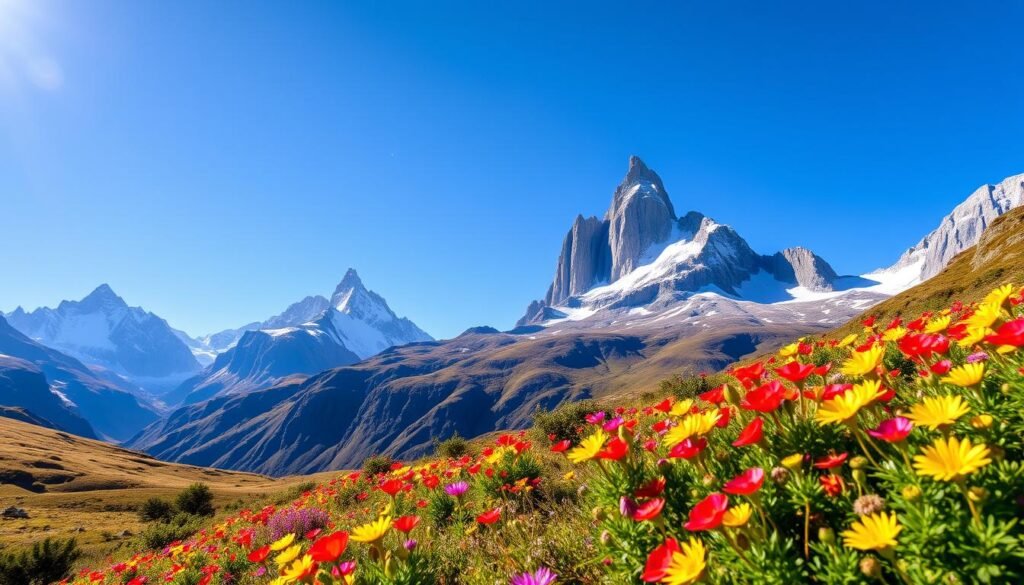
Argentine Patagonia
Argentine Patagonia offers a similar Patagonian experience with its own unique attractions. The best time to visit Argentine Patagonia is also during its summer, from December to February, when temperatures are warmer and roads are more accessible.
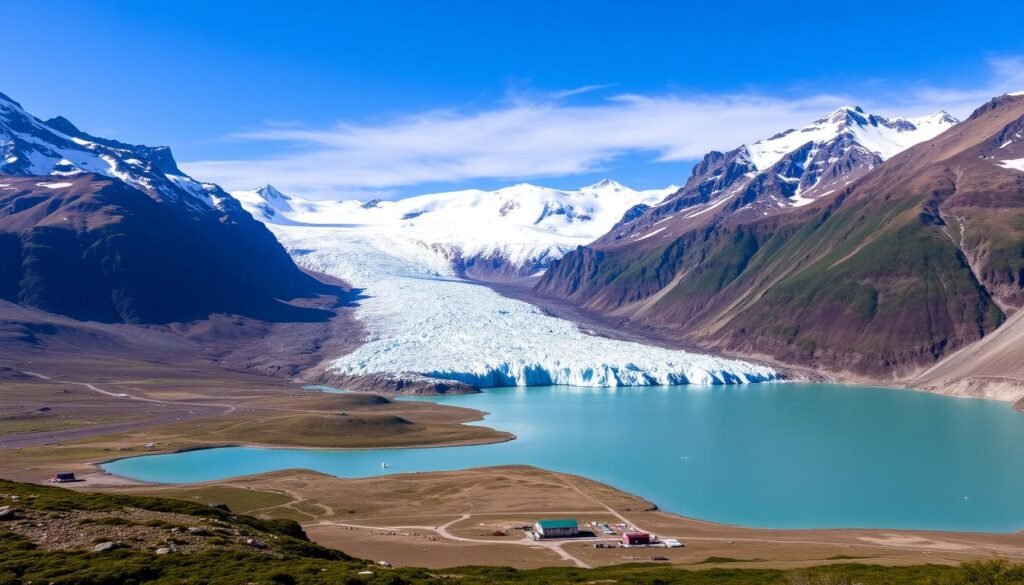
Seasonal Considerations for Tierra del Fuego
Tierra del Fuego, at the southern tip of South America, experiences extreme seasonal variations. The prime visiting season is from December to February, with mild temperatures and long days ideal for outdoor activities. Cruises through the Beagle Channel operate primarily during these summer months, offering favorable sea conditions and abundant wildlife viewing opportunities.
Tierra del Fuego’s seasonal variations include up to 17 hours of daylight in December and as little as 7 hours in June. The shoulder months of November and March can offer fewer crowds, while winter brings opportunities for skiing at Cerro Castor near Ushuaia.
Best Countries to Visit in South America by Season
South America is a vast and diverse continent, offering a wide range of experiences across different countries and seasons. The continent’s varied climate zones and landscapes make it an attractive destination for travelers year-round.
Summer Destinations (December-February)
During the summer months in the Southern Hemisphere, countries like Brazil and Argentina come alive with vibrant festivals and warm weather. Brazil’s Carnival is one of the most famous events, attracting millions of visitors. Brazil’s beaches, such as Copacabana and Ipanema, are perfect for soaking up the sun. Meanwhile, in Argentina, the summer is ideal for visiting Patagonia, with its stunning landscapes and outdoor activities like hiking and skiing.
As Mark Twain once said, “Travel is fatal to prejudice, bigotry, and narrow-mindedness”; visiting South America during its summer can be a transformative experience. The warmth and energy of the season make it an excellent time to explore the continent’s natural beauty and cultural heritage.
Fall Destinations (March-May)
The fall season brings mild temperatures and fewer crowds to many parts of South America, making it an excellent time to visit countries like Peru and Chile. Peru’s Inca Trail is a popular destination during this time, with comfortable weather conditions for hiking. In Chile, the wine country is in full bloom, offering a picturesque landscape and the opportunity to taste some of the world’s best wines.

As the season transitions, the landscapes transform, offering a unique blend of natural beauty and cultural experiences. It’s a great time to explore the continent’s diverse regions without the peak season crowds.
Winter Destinations (June-August)
Winter in South America brings different experiences across the continent. The Amazon Basin, spanning across several countries, is ideal to visit during the dry season, which coincides with the northern hemisphere’s summer. Brazil’s Pantanal wetlands offer excellent wildlife viewing opportunities during this time. In the Andes, countries like Chile and Argentina provide world-class skiing resorts, such as Portillo in Chile and Bariloche in Argentina.
- The Galapagos Islands are another highlight, with cooler waters and excellent conditions for wildlife viewing.
- Peru remains a popular destination, with its dry season making it ideal for exploring the Inca ruins and other attractions.
- Bolivia’s salt flats are typically dry, offering a unique landscape.
As
“The world is a book, and those who do not travel read only one page”
, visiting South America during its winter can be a great way to explore new destinations and experience the continent’s diverse cultures and landscapes.
Spring Travel in South America (September-November)
As the winter chill dissipates, South America awakens in spring, offering travelers a unique blend of culture and adventure. This season brings a mix of favorable conditions across various regions.
Colombia and the Northern Countries
Colombia is an excellent destination during the spring season. The best time to visit Colombia is during this period, with pleasant weather and fewer tourists compared to the peak dry season months.
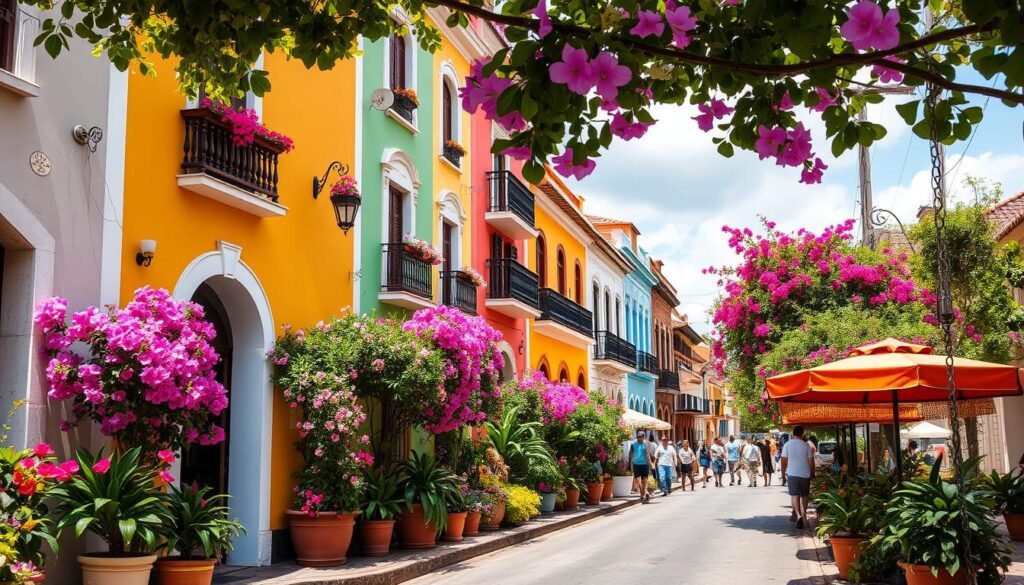
The country’s diverse landscapes, from the Caribbean coast to the Andean highlands, offer a range of experiences. Spring is an ideal time to explore cities like Bogotá and Medellín, as well as natural wonders.
Central South American Spring
Spring brings increasingly favorable conditions to Peru and Bolivia, with the dry season still in effect but tourist crowds beginning to thin out after the peak July-August period.
- The Sacred Valley and Machu, Picchu in Peru enjoy some of their best weather during September and October.
- Bolivia’s salt flats remain accessible during these months.
- Brazil’s Pantanal transitions from dry to wet season, creating interesting wildlife viewing opportunities.
- The Amazon begins to see increasing rainfall, particularly in November.
- Wine regions in Argentina and Chile begin their growing season, with vineyards turning green.
These conditions make spring an attractive season for travelers to various countries in central South America, offering a blend of cultural experiences and natural beauty in the South American world.
Coastal Regions and Beach Destinations
The coastal regions of South America are home to some of the world’s most stunning beaches, each with its unique charm and attractions. Whether you’re looking for vibrant beach towns or secluded coves, South America’s coastline has something for everyone.
Brazil’s Coastline
Brazil’s extensive coastline is dotted with world-famous beaches that attract visitors from around the globe. The best time to visit Brazilian beaches is during the summer months (December to March) when the weather is warm and sunny. Popular destinations like Copacabana and Ipanema in Rio de Janeiro are must-visits, offering a mix of beach culture, vibrant nightlife, and scenic beauty.
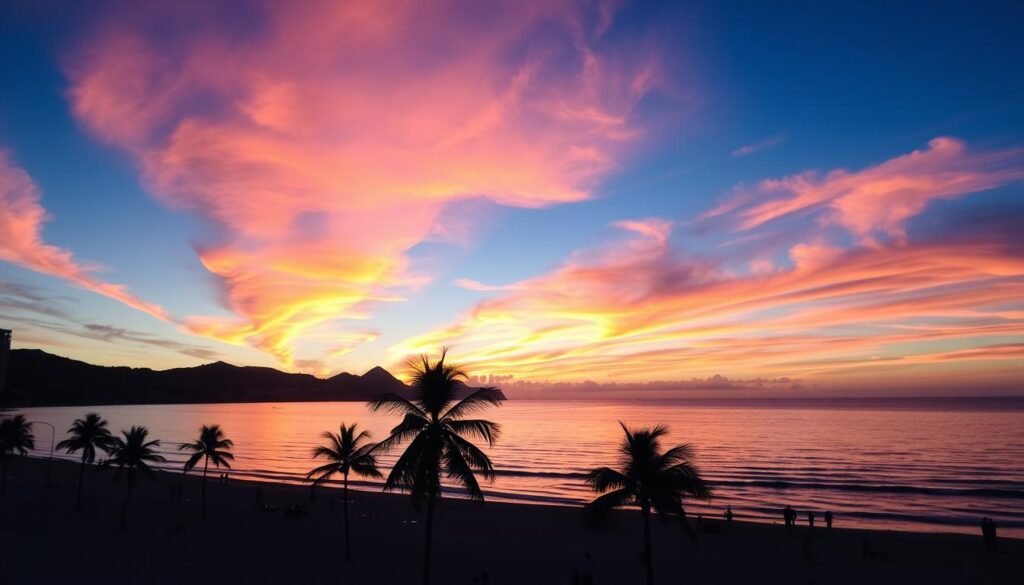
Uruguay’s Beach Season
Uruguay’s coastal towns, particularly Punta del Este, are renowned for their beautiful beaches and laid-back atmosphere. The peak tourist season in Punta del Este runs from December to February, with warm weather and a lively social scene making it an ideal destination for beachgoers. The shoulder season (March to May or September to November) offers a more relaxed experience with fewer crowds.
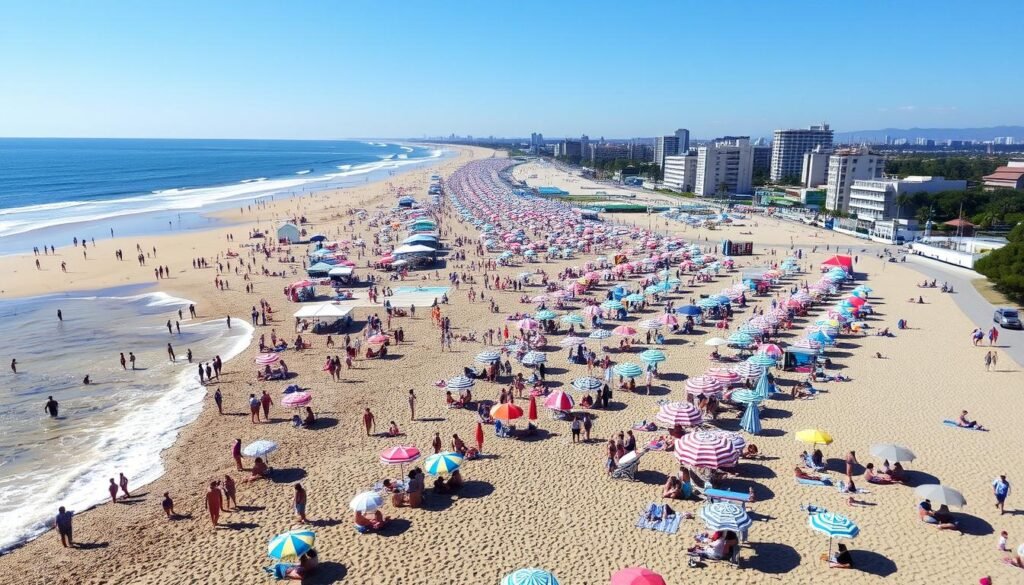
Colombia’s Caribbean Coast
Colombia’s Caribbean coast is a treasure trove of beach destinations, with Cartagena being a standout. The dry season, from December to April, is the best time to visit Cartagena and other coastal towns like Santa Marta and Tayrona National Park. This period offers ideal conditions for enjoying the region’s pristine beaches and exploring its rich cultural heritage. The water temperatures remain warm year-round, making it perfect for swimming and water activities.
Key Highlights:
- Colombia’s Caribbean coast experiences its driest weather from December to April.
- Tayrona National Park offers some of Colombia’s most pristine beaches but closes for one month each year.
- Cartagena combines beach access with colonial architecture and history.

Island Destinations and When to Visit
Exploring South America’s islands is like stepping into a world of untouched beauty and fascinating culture. These islands offer a unique blend of natural wonders and historical significance, making them a must-visit for any traveler.
Galapagos Islands

The Galapagos Islands are a year-round destination, but the best time to visit is during the dry season, from June to November, when the weather is cooler and wildlife is more abundant. This period is ideal for snorkeling and diving, as the waters are calmer and offer better visibility.
Easter Island (Chile)
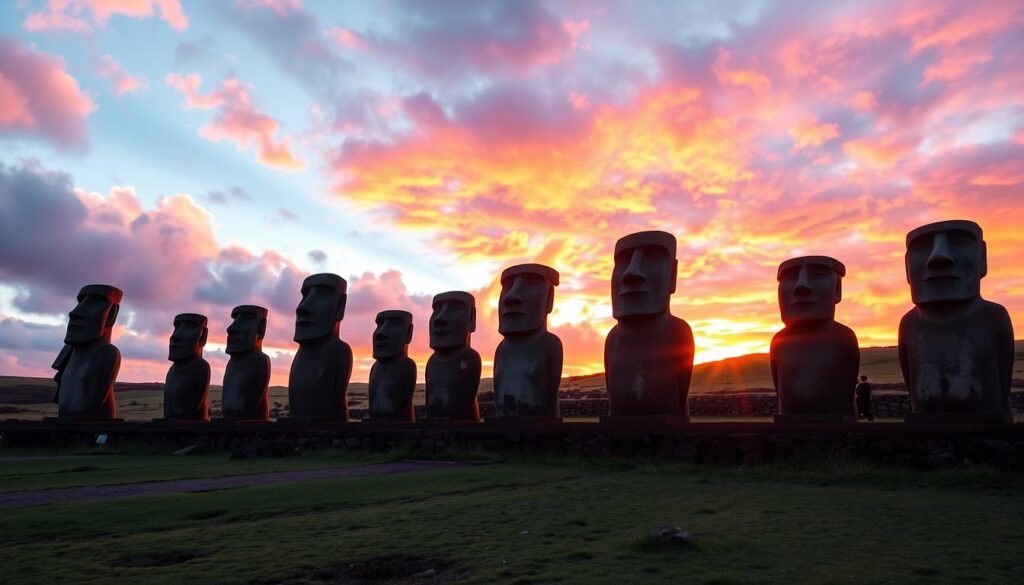
Easter Island, or Rapa Nui, experiences its warmest and most popular tourist season from January to March, with temperatures averaging around 80°F (27°C) and minimal rainfall. The shoulder seasons of April-May and October-December offer pleasant conditions with fewer tourists, making them excellent times to explore the island’s famous moai statues. The best time to photograph the iconic moai is generally early morning or late afternoon when the angled sunlight creates dramatic shadows on the stone faces.
The island’s subtropical climate means that day-to-day weather can be variable in any season, with sun, clouds, and brief showers often alternating within a single day. It’s essential to plan ahead, as Easter Island’s remote location means that flights are limited and should be booked well in advance, particularly during the high season.
Traveling During Festival Seasons
South America transforms into a kaleidoscope of color and music during its festival seasons, offering travelers a unique and unforgettable experience. The continent’s diverse cultures and traditions come alive through various festivals celebrated throughout the year.
Carnival in Brazil
Carnival in Brazil, particularly in Rio de Janeiro, is one of the most famous and extravagant festivals in the world. The celebration, which takes place in February or March, is characterized by parades, street parties, and samba music. Rio’s Carnival is a must-experience for any traveler, with its elaborate floats and costumes.
When is Rio Carnival? The exact dates vary from year to year, but it typically occurs in late February or early March, preceding the Christian season of Lent.
Inti Raymi in Peru
Inti Raymi, or the Festival of the Sun, is an ancient Inca celebration that takes place in Cusco, Peru. This event, held on June 24th, reenacts the traditional Inca rituals and ceremonies, honoring the sun god. It’s a spectacular display of Peru’s rich cultural heritage, attracting visitors from around the world.
Other Notable South American Festivals
South America is home to numerous other significant festivals, each reflecting the local culture and traditions. Some notable events include:
- Bolivia’s Oruro Carnival, a UNESCO-recognized event featuring elaborate devil dances.
- Argentina’s Vendimia (Wine Harvest Festival) in Mendoza, celebrating the region’s wine production.
- Colombia’s Barranquilla Carnival, the second-largest Carnival celebration in South America.
- Ecuador’s Corpus Christi celebrations in Cuenca, blending Catholic and indigenous traditions.
- Chile’s La Tirana Festival, a religious celebration honoring the Virgin of Carmen.
The fact that many South American festivals combine indigenous traditions with Catholic influences creates unique cultural expressions found nowhere else in the world.
Weather Considerations for Major Cities
When traveling to South America, understanding the local climate of major cities can make or break your trip. The diverse geography of the continent results in a wide range of weather conditions across different cities.
Buenos Aires, Argentina
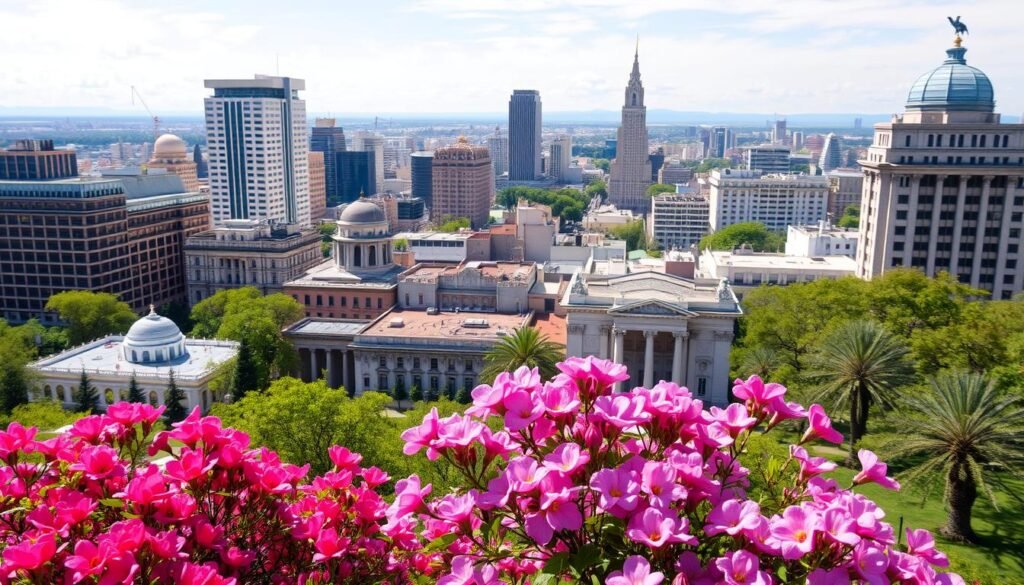
Buenos Aires has a humid subtropical climate, with hot summers and mild winters. The best time to visit is during spring (September to November) or fall (March to May), when the weather is mild and pleasant.
Santiago, Chile
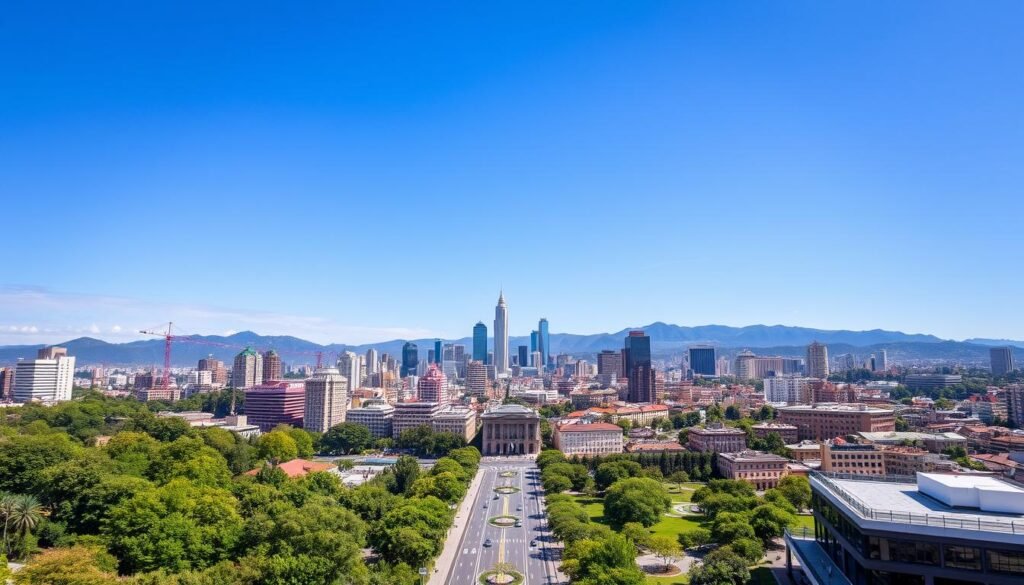
Santiago experiences a Mediterranean climate, characterized by hot, dry summers and cool, wet winters. The city enjoys pleasant spring and fall seasons, making these periods ideal for visiting.
Lima, Peru and Bogotá, Colombia
Lima’s coastal desert climate means it has minimal rainfall but high humidity year-round, creating a persistent gray fog during winter months. Summer is Lima’s sunniest period. Bogotá, sitting at 8,660 feet elevation, has a cool climate year-round, with temperatures rarely exceeding 70°F. The Colombian capital experiences two drier and two wetter seasons annually. The fact that these two capital cities have dramatically different climates despite being relatively close geographically demonstrates the extreme diversity of South American weather patterns over the course of a year.
Understanding these climate differences is key to planning a successful trip to these cities and enjoying their unique characteristics as capital destinations.
Budget Travel Seasons in South America
The key to a budget-friendly trip to South America lies in understanding the continent’s seasonal pricing trends. By timing your visit correctly, you can significantly reduce your expenses without compromising on the quality of your travel experience.
High Season vs. Low Season Costs
Understanding the difference between high and low season costs is crucial for budget travelers. High season, typically characterized by peak tourist activity, comes with higher prices for accommodations, tours, and other travel-related services. In contrast, the low season offers lower costs but may come with less favorable weather conditions or reduced availability of certain tourist attractions.
For instance, visiting Peru during the shoulder season (April-May or September-October) can provide a more affordable and less crowded experience when exploring Machu. Picchu, compared to the peak season (June-August).

Shoulder Season Advantages
The shoulder season, which typically falls in April-May and September-November for many South American destinations, offers an excellent balance of reasonable prices and favorable weather conditions. Some of the advantages of traveling during the shoulder season include:
- Visiting Patagonia in November or March offers good weather with lower prices compared to the peak season.
- The Galapagos Islands are more affordable and less crowded during April-May and September-November.
- Brazil’s coastal destinations are more budget-friendly during April-June and August-November.
- Traveling during the shoulder season allows for more flexibility and better negotiating power for longer stays or package deals, maximizing the value of your trip.
By choosing the right time to visit different countries in South America, travelers can enjoy a more affordable and fulfilling experience. Whether you’re exploring the ancient ruins of Peru or the vibrant cities of Brazil, understanding the local tourist seasons can help you make the most of your journey.
Safety Considerations by Region and Season
The diverse regions of South America come with unique safety challenges that travelers should be aware of, especially when considering the time of year they plan to visit. Understanding these factors can significantly enhance the quality and safety of your travel experience.
Urban Safety Tips
When navigating urban areas in South America, it’s crucial to be mindful of your surroundings, especially in crowded cities. Petty theft and pickpocketing are common issues, so keeping valuables secure and being cautious in busy areas can mitigate these risks.
Rural and Remote Area Precautions
Venturing into rural and remote areas requires additional precautions. The risk of natural hazards such as landslides during rainy seasons is higher in these regions. Ensuring you have proper guidance, equipment, and contingency plans can help manage these risks.
Seasonal Safety Concerns
Seasonal changes bring various safety concerns across South America. For instance:
- Rainy seasons can lead to flooding and landslides, affecting travel plans and water quality.
- Summer heat waves can pose health risks, particularly in urban areas.
- Winter conditions in southern regions can make some roads impassable.
- Water safety varies by season, with certain months bringing dangerous currents or water contamination.
- Disease vectors like mosquitoes are more prevalent during warm, wet months.
Being aware of these seasonal safety concerns and planning accordingly can help ensure a safe and enjoyable journey through South America.
Planning Multi-Country South American Itineraries
Creating a multi-country itinerary for South America requires consideration of several factors, including climate, transportation, and cultural events. A well-planned trip can help you make the most of your time and experience the diverse cultures and landscapes that South America has to offer.
Northern Circuit (Colombia, Ecuador, Peru)
The Northern Circuit is a popular route that covers Colombia, Ecuador, and Peru. This region is known for its rich cultural heritage, including the ancient Inca city of Machu Picchu in Peru, and the vibrant cities of Bogotá and Quito.
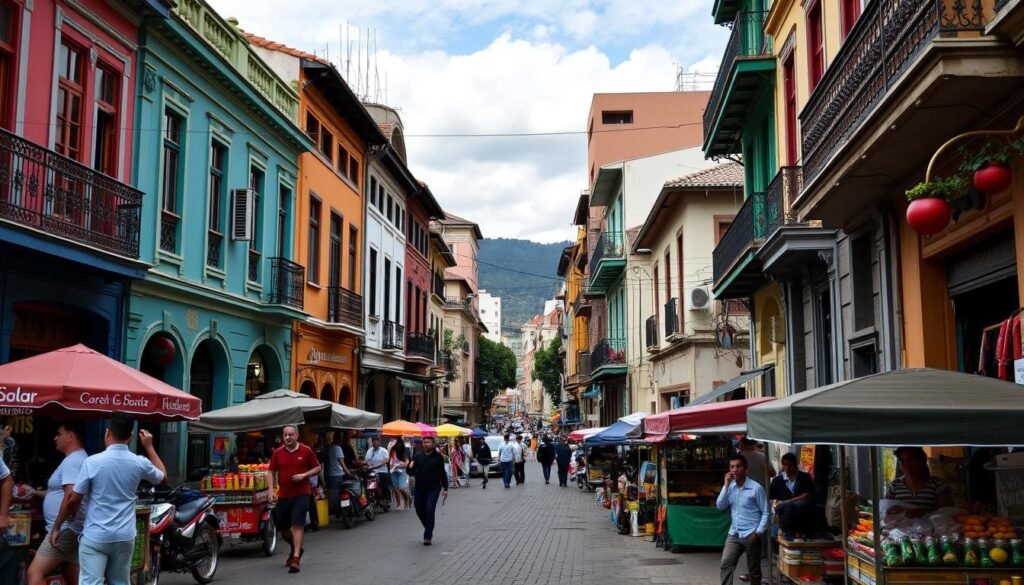
Southern Circuit (Argentina, Chile, Uruguay)
The Southern Circuit covers Argentina, Chile, and Uruguay, offering a mix of urban excitement, beautiful coastlines, and the stunning Patagonia region. Visitors can explore the vibrant city of Buenos Aires, the scenic Lake District in Chile, and the charming coastal towns of Uruguay.
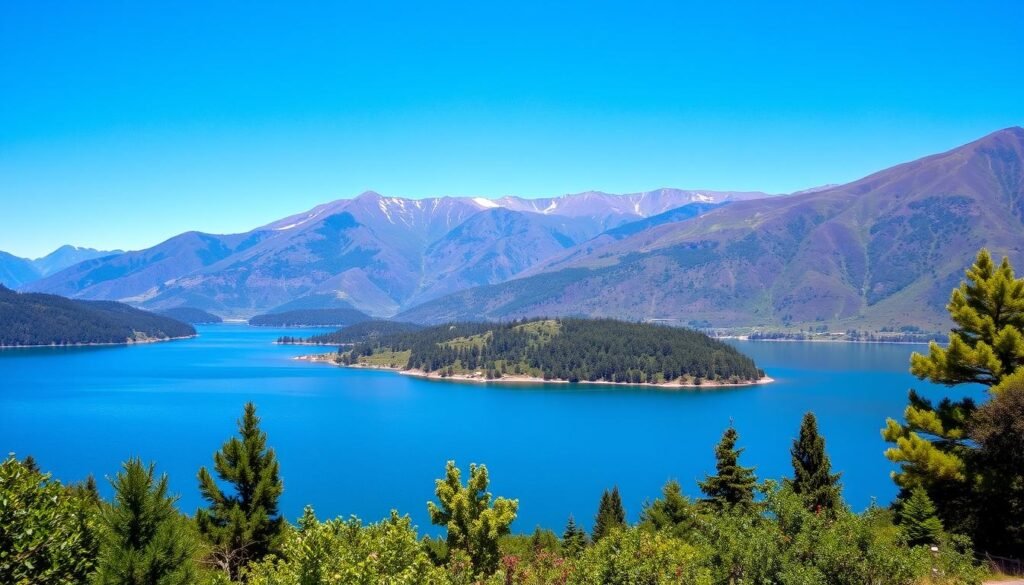
Cross-Continental Routes
Cross-continental routes require careful seasonal planning, as they typically cross multiple climate zones with different optimal visiting periods. A classic South American cross-continental journey from Peru to Argentina might start in May-June and end in December-January. Bolivia serves as an excellent transitional country between Peru and Argentina/Chile, with its dry season aligning well with both neighboring regions.
Key considerations for cross-continental routes:
- Careful planning around climate zones and optimal visiting periods
- Flexibility in your itinerary to accommodate seasonal variations
- Transportation infrastructure, primarily limited to air travel, with seasonal variations in flight frequency and pricing
By understanding the climate, transportation options, and cultural events in each region, you can create a memorable and enjoyable trip to South America.
Conclusion: The Ideal South American Travel Calendar
South America’s varied regions and climates ensure that there’s always a perfect time to visit, regardless of the year. The continent’s diverse climate zones create year-round opportunities for travelers, with optimal conditions always available somewhere in the countries of South America.
The ideal travel calendar for South America depends on the regions you wish to visit. For instance, January and February are ideal for Patagonia and the beaches in the Southern Cone countries, while March and April offer excellent conditions for wine regions and the fall colors in the southern countries.
May through September is the best period for visiting Machu. Picchu and the Andean highlands, as well as for exploring the Amazon during the dry season. October and November bring spring to the southern regions, with wildflowers blooming and conditions improving before the summer tourist rush.
To make the most of your trip, consider focusing on compatible regions during their optimal season or plan an extended trip that follows the continent’s seasonal patterns. With careful planning and flexibility, travelers can experience the best of South America‘s incredible diversity, regardless of when they have time to visit during the year.
By understanding the climate and seasonal variations across different regions, you can tailor your itinerary to include the experiences that matter most to you, ensuring a memorable and enjoyable journey through this incredible continent.